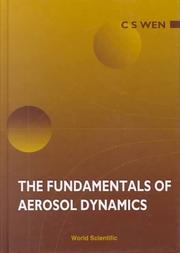| Listing 1 - 10 of 28 | << page >> |
Sort by
|
Book
ISBN: 9781107132849 9781316459300 Year: 2017 Publisher: Cambridge Cambridge University Press
Abstract | Keywords | Export | Availability | Bookmark
 Loading...
Loading...Choose an application
- Reference Manager
- EndNote
- RefWorks (Direct export to RefWorks)
How does a particle accelerator work? The most direct and intuitive answer focuses on the dynamics of single particles as they travel through an accelerator. Particle accelerators are becoming ever more sophisticated and diverse, from the Large Hadron Collider (LHC) at CERN to multi-MW linear accelerators and small medical synchrotrons. This self-contained book presents a pedagogical account of the important field of accelerator physics, which has grown rapidly since its inception in the latter half of the last century. Key topics covered include the physics of particle acceleration, collision and beam dynamics, and the engineering considerations intrinsic to the effective construction and operation of particle accelerators. By drawing direct connections between accelerator technology and the parallel development of computational capability, this book offers an accessible introduction to this exciting field at a level appropriate for advanced undergraduate and graduate students, accelerator scientists, and engineers.
Particle accelerators. --- Particle dynamics. --- Synchrotron radiation.
Book
Year: 1967 Publisher: San Francisco Holden-Day
Abstract | Keywords | Export | Availability | Bookmark
 Loading...
Loading...Choose an application
- Reference Manager
- EndNote
- RefWorks (Direct export to RefWorks)
Particles (Nuclear physics) --- Particle dynamics --- Quantum theory
Book
ISBN: 1527532925 Year: 2019 Publisher: Newcastle upon Tyne, England : Cambridge Scholars Publishing,
Abstract | Keywords | Export | Availability | Bookmark
 Loading...
Loading...Choose an application
- Reference Manager
- EndNote
- RefWorks (Direct export to RefWorks)
Book
Year: 1924 Publisher: [Bruxelles : M. Lamertin,
Abstract | Keywords | Export | Availability | Bookmark
 Loading...
Loading...Choose an application
- Reference Manager
- EndNote
- RefWorks (Direct export to RefWorks)
Particle dynamics. --- Orbits --- Gravitation --- Dynamique d'une particule --- Orbites --- Gravitation
Book
Year: 2017 Publisher: Aberdeen Proving Ground, MD : US Army Research Laboratory,
Abstract | Keywords | Export | Availability | Bookmark
 Loading...
Loading...Choose an application
- Reference Manager
- EndNote
- RefWorks (Direct export to RefWorks)
Particle dynamics. --- Multiscale modeling. --- System theory. --- Programming (Mathematics) --- Algorithms.
Book
ISBN: 9783030886899 Year: 2022 Publisher: Cham Springer International Publishing :Imprint: Springer
Abstract | Keywords | Export | Availability | Bookmark
 Loading...
Loading...Choose an application
- Reference Manager
- EndNote
- RefWorks (Direct export to RefWorks)
Chirality. --- Nanoparticle dynamics. --- Nanoparticles. --- Nano-particles --- NPs (Nanoparticles) --- Nanoscale particles --- Nanostructured materials --- Particles --- Dynamics of nanoparticles --- Nano-particle dynamics --- Nanoparticles --- Particle dynamics --- Stereochemistry --- Symmetry (Physics) --- Enantiomers --- Dynamics
Book
Year: 1923 Publisher: London,New York : Longmans, Green,
Abstract | Keywords | Export | Availability | Bookmark
 Loading...
Loading...Choose an application
- Reference Manager
- EndNote
- RefWorks (Direct export to RefWorks)
Dynamics, Rigid --- Particle dynamics. --- Mechanics --- Dynamique des corps rigides --- Dynamique d'une particule --- Mécanique
Book
ISBN: 9780486788104 Year: 2015 Publisher: Mineola, New York : Dover Publications, Inc.,
Abstract | Keywords | Export | Availability | Bookmark
 Loading...
Loading...Choose an application
- Reference Manager
- EndNote
- RefWorks (Direct export to RefWorks)
A concise treatment of angular momentum by an important American physicist, this major work was first published under the auspices of the United States Atomic Energy Commission in 1952 and is finally available to a general audience of students and professionals in the field. Advanced undergraduates and graduate students of physics will particularly benefit from its teachings.One of the most prominent American physicists of the twentieth century, Julian Schwinger (1918–94) taught at Harvard, MIT, and UCLA, among other institutions. In addition to his many other awards, Schwinger, jointly with Richard Feynman and Shinichiro Tomonaga, received the Nobel Prize in Physics in 1965 for his work in quantum electrodynamics.

ISBN: 9812796320 9789812796325 9810226616 9789810226619 Year: 1996 Publisher: Singapore ; River Edge, N.J. : World Scientific,
Abstract | Keywords | Export | Availability | Bookmark
 Loading...
Loading...Choose an application
- Reference Manager
- EndNote
- RefWorks (Direct export to RefWorks)
During the past 30 years, there have been advances in the understanding of multi-particle hydrodynamic interactions in the field of aerosol dynamics. Aerosol dynamics is developing from isolated-particle stage into multi-particle stage. This book reviews these progresses, and the subjects it covers include sedimentation, coagulation, mass or heat transfer, effective viscosity, and the evolution of the size distribution.
Aerosols. --- Particle dynamics. --- Colloids --- Gases --- Dynamics of a particle --- Dynamics of particles --- Particles --- Dynamics --- Dynamics of a particle.
Book
Year: 1967 Publisher: San Francisco : Holden-Day,
Abstract | Keywords | Export | Availability | Bookmark
 Loading...
Loading...Choose an application
- Reference Manager
- EndNote
- RefWorks (Direct export to RefWorks)
Particles (Nuclear physics) --- Particle dynamics. --- Quantum theory --- Particules (Physique nucléaire) --- Dynamique d'une particule --- Théorie quantique
| Listing 1 - 10 of 28 | << page >> |
Sort by
|

 Search
Search Feedback
Feedback About UniCat
About UniCat  Help
Help News
News